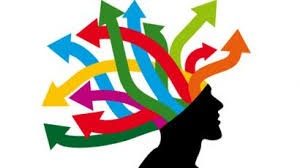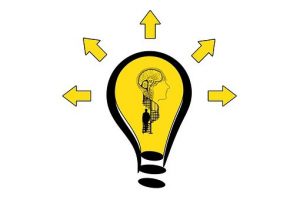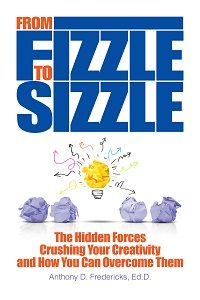Blog
Brainstorming is NOT Creative

Creative Minds
A Regular Column by Anthony D. Fredericks
Brainstorming is NOT Creative
 It probably wouldn’t surprise you to learn that many organizations, when faced with a challenge, brainstorm it to death. “Let’s all get together in the Conference Room and we’ll throw a bunch of ideas up on the whiteboard and we should have this thing hammered out by lunchtime!” The prevalent thinking is that a bunch of people tossing random ideas at one another will eventually discover an idea that works.
It probably wouldn’t surprise you to learn that many organizations, when faced with a challenge, brainstorm it to death. “Let’s all get together in the Conference Room and we’ll throw a bunch of ideas up on the whiteboard and we should have this thing hammered out by lunchtime!” The prevalent thinking is that a bunch of people tossing random ideas at one another will eventually discover an idea that works.
Indeed, brainstorming seems to be the default answer to any organizational issue. Other creative endeavors are eschewed in favor of a strategy that has been celebrated for several decades. “If it’s been around for that long,” the thinking goes, “then it must be good.”
One researcher looked into the real effects of brainstorming on creative thinking and found that, rather than leading to a wealth of new ideas, brainstorming often narrows the focus of a group to just one, non-optimal idea. He found that it was common for members of a group to become fixated with the ideas of others, and for the group to unconsciously coalesce and conform to a single idea; rather than exploring a range of ideas.
Other experts have also underscored brainstorming’s lack of effectiveness as a creative endeavor. For example, in any group situation, there is a hierarchy. That is, some people in the group are perceived to have more “power” than others. Junior members are seen as less powerful and less influential than older, more established, members. This power differential results in select members generating a disproportionate amount of ideas, based solely on their social standing. “The more assured members of the group assert their ideas first and then those less confident agree, even if they might have equally sound ideas.”
Brainstorming also places arbitrary constraints on the generation of ideas. As we know, ideas come at odd times and in odd places – not always during a regularly scheduled meeting in Room 103 at 3:30 on Tuesday afternoons. R. Keith Sawyer, a professor of psychology at Washington University says, “Brainstorming often…violates what we know about the generation of creative thoughts – simply because creativity is not a linear process: it’s adding ideas, subtracting ideas, combining ideas together, and slicing ideas up and putting them back together in new patterns or configurations.”
The bottom line: Use brainstorming with caution. It’s not everything it’s cracked up to be!
__________________
 Dr. Anthony D. Fredericks is an award-winning author of more than 170 books, including From Fizzle to Sizzle: The Hidden Forces Crushing Your Creativity and How You Can Overcome Them as well as five other Blue River Press titles (e.g. Writing Children’s Books). He also pens a regular blog for Psychology Today.com (https://www.psychologytoday.com/us/ contributors/anthony-d-fredericks-edd)
Dr. Anthony D. Fredericks is an award-winning author of more than 170 books, including From Fizzle to Sizzle: The Hidden Forces Crushing Your Creativity and How You Can Overcome Them as well as five other Blue River Press titles (e.g. Writing Children’s Books). He also pens a regular blog for Psychology Today.com (https://www.psychologytoday.com/us/ contributors/anthony-d-fredericks-edd)
At Blue River Press our mission is to produce, distribute and market books that present the reader with good educational and entertaining information at a value.
To see more Blue River Press books, have a look at our book shop. If you have any questions or would like to order some books, contact us here.
Looking for Little Things
Creative Minds
A Regular Column by Anthony D. Fredericks
Looking for Little Things
 We often have this mistaken idea that a creative idea is a big idea. The invention of manned flight, the cure for polio, the creation of the World Wide Web, and the development of a vaccine for COVID-19. True, those are big creative concepts; but true creativity is founded on a principle of little discoveries…the small treasures we find when we envision creativity as “looking for the small, not just the big.” Discovering a synonym for “said” in the novel we’re writing. Mixing three colors together for the sunset in a landscape painting we’re working on. Discovering that a paper clip can be used to repair a broken toy. Lots of little creative acts gets us in the habit of making creativity a normal and natural part of our daily lives, rather than just an event that happens on rare occasions.
We often have this mistaken idea that a creative idea is a big idea. The invention of manned flight, the cure for polio, the creation of the World Wide Web, and the development of a vaccine for COVID-19. True, those are big creative concepts; but true creativity is founded on a principle of little discoveries…the small treasures we find when we envision creativity as “looking for the small, not just the big.” Discovering a synonym for “said” in the novel we’re writing. Mixing three colors together for the sunset in a landscape painting we’re working on. Discovering that a paper clip can be used to repair a broken toy. Lots of little creative acts gets us in the habit of making creativity a normal and natural part of our daily lives, rather than just an event that happens on rare occasions.
Stephen Guise makes a case for the power of small habits, rather than our over-reliance on large, wieldy, and often weighty big habits. He makes a valid point when he says, “Big intensions are worthless if they don’t bring results.” For example, we may make a resolution to lose 50 pounds this year, but we often find ourselves giving up (sooner, rather than later) because the perceived goal was much too large.
Guise makes two clear and penetrating points: “1) Doing a little bit is infinitely bigger and better than doing nothing, and 2) doing a little bit every day has a greater impact than doing a lot on one day.” Now, let’s put that in terms of our personal creativity: 1) Looking for one little piece of creativity is better than doing nothing at all, and 2) looking for a little (creative) thing every day is much more effective and practical than trying to generate a very large idea every so often.
The point is clear – a determination to make creativity a regular and normal part of our daily activities prepares our mind to be ready for those times when we need a really large (and/or profitable) idea in our work or our everyday lives. The same holds true for our children. When we offer them opportunities to make creativity a regular part of their development and education, we send a powerful signal that creativity doesn’t just happen every so often, but can be a normal (even daily) part of their intellectual functioning.
“Creativity is a habit, and the best creativity is the result of good work habits.” – Twyla Tharp
__________________
 Dr. Anthony D. Fredericks is an award-winning author of more than 170 books, including the highly anticipated From Fizzle to Sizzle: The Hidden Forces Crushing Your Creativity and How You Can Overcome Them (January 21, 2022) as well as five other Blue River Press titles (e.g. Ace Your First Year Teaching). He also pens a regular blog (“Creative Insights”) for Psychology Today.com (https://www.psychologytoday.com/us/contributors/anthony-d-fredericks-edd)
Dr. Anthony D. Fredericks is an award-winning author of more than 170 books, including the highly anticipated From Fizzle to Sizzle: The Hidden Forces Crushing Your Creativity and How You Can Overcome Them (January 21, 2022) as well as five other Blue River Press titles (e.g. Ace Your First Year Teaching). He also pens a regular blog (“Creative Insights”) for Psychology Today.com (https://www.psychologytoday.com/us/contributors/anthony-d-fredericks-edd)
To see more inspiring books whether self-help, sports, biography, or fiction, take a look around the brpressbooks.com shop. If you have any questions, you can contact us here.
Happy reading!
